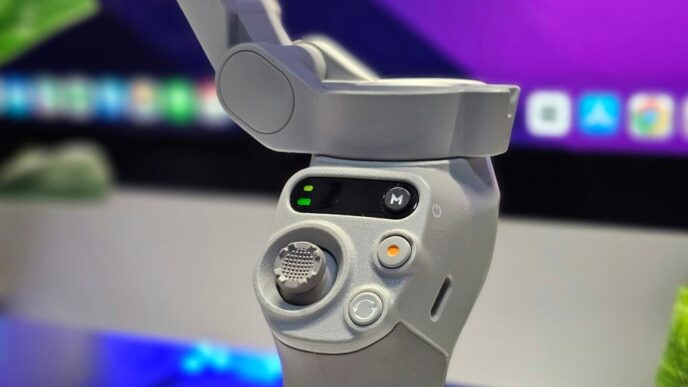Overview of ADAS
Advanced Driver Assistance Systems (ADAS) offer motorists increased safety, security and convenience. This umbrella term covers features such as lane departure warning systems, night vision cameras and self-parking sensors. With the help of sensors, cameras and algorithms, ADAS warns drivers about potential hazards on the road. Plus, it can automate some decisions while driving.
Recent advances include adaptive cruise control, automatic emergency braking (AEB) and blind-spot monitoring assistant. According to AAA Foundation for Traffic Safety, vehicles with AEB are involved in 46% fewer rear-end crashes than those without. Making ADAS compulsory in all vehicles worldwide could save lives!
ADAS technology is making driving easier and more comfortable. So, you can feel like a superhero behind the wheel – minus the cape and spandex!
Types of ADAS Features
To understand the various types of Advanced Driver Assistance System (ADAS) features, the following sub-sections have been discussed: Adaptive Cruise Control (ACC), Lane Departure Warning (LDW), Blind Spot Detection (BSD), Automatic Emergency Braking (AEB), Rearview Camera, Parking Sensors, Traffic Sign Recognition (TSR), Night Vision.
Adaptive Cruise Control (ACC)
The advanced safety feature, known as Intelligent Cruise Control, adjusts your vehicle’s speed based on the distance to the car in front. It’s called Adaptive Cruise Control (ACC). It detects vehicles and keeps a safe following distance. As traffic changes, it speeds up or slows down without driver input. ACC is a lifesaver in busy highways.
The ACC also has a Stop-and-Go function. This allows the car to come to a halt and restart when traffic starts moving again. But, it’s only under a set speed limit.
If you’re stuck in traffic on the highway, you don’t have to worry if your car has ACC. It helps you stay relaxed by managing acceleration and braking, based on the variable distance between cars.
Even when using ACC, you must still pay attention to the road and keep your hands on the wheel. Switching lanes before and after entering or exiting a highway helps other drivers get in or out quicker. Plus, it helps you avoid slow-moving vehicles, which can impact fuel efficiency and trip duration.
LDW: Because who needs a backseat driver when your car can nag you about staying in your lane?
Lane Departure Warning (LDW)
Advanced tech has enabled the integration of a feature in vehicles to detect when the driver strays from their lane unintentionally. The system instantly alerts the driver to stay focused and not drift away. This ensures safety for both driver and passenger.
Sensors on the vehicle’s windshield or cameras on either side of it monitor the lane markings and vehicle position. If an unexpected displacement from the current lane is detected without any signal from the turn signal, an alert will be triggered through visual, audible or tactile means to warn the driver.
It is essential to know that this feature does not take over car control. It serves only as an aid to alert the driver to stay focused. In case of severe distraction or drowsiness, this feature can prevent crashes due to unintended deviation from normal driving behavior.
LDW is critical for automotive safety and improved driving experience. It can drastically reduce crashes and make roads safer. Don’t miss out on adding an extra layer of safety to your vehicle; install this crucial mechanism now!
Watch your back, and let Blind Spot Detection do the same.
Blind Spot Detection (BSD)
This Advanced Driver Assistance System (ADAS) uses sensors to spot vehicles in a driver’s blind spot. Warnings appear in the form of visuals, sounds or vibrations. These alert the driver, helping to avoid potential collisions.
Examples of this life-saving feature include Lane Change Assist (LCA), Blind Spot Monitoring (BSM) and Rear Cross-Traffic Alert (RCTA). LCA tells the driver if another vehicle is coming too quickly when they are changing lanes. BSM constantly monitors blind spots at high speeds.
RCTA warns drivers of oncoming traffic when reversing out of a parking space.
BSD first appeared in luxury cars like the Volvo S80 in 2005. Now it is popular in mainstream vehicles. This feature has surely saved countless lives from collisions caused by unaware drivers. Who needs a knight in shining armor when you have Automatic Emergency Braking to keep you safe?
Automatic Emergency Braking (AEB)
AEB is a sophisticated safety system that can initiate brakes automatically and avoid crashes. It uses radar, cameras, or sensors to detect potential collisions and applies brakes without human
intervention. This hands-free feature can reduce the risk of accidents significantly. It’s useful for when drivers are distracted, tired, or fail to react fast enough.
Many automobile brands have included this system in their latest models. Consumers must be aware of the different AEB designs and features offered by different brands. To ensure your car’s safety systems are functioning properly, always take it to an authorized service center for maintenance and updates.
Plus, with a rearview camera installed, you can finally see who’s been tailgating you!
Rearview Camera
ADAS features are a technological aid for safer driving. One such feature is the Rearview Camera. It shows a video of what’s behind the car on the dashboard.
This extra eye has saved many lives, like kids and animals crossing behind the car. The camera vision has lines to show the driver how much space to leave while reversing.
Low-speed accidents can be fatal, but the Rearview Camera reduces the chances. Regular maintenance and cleaning of the camera is necessary to make sure it works.
Not using these technologies puts your life, and others’ on the road, at risk. Get a Rearview Camera in your car now! If only my ex had parking sensors, maybe our relationship wouldn’t have crashed and burned.
Parking Sensors
These instruments are known as Tools for Park Management. They utilize ultrasonic sensors to recognize the closeness of objects in the vehicle’s way.
- Parking sensors can be fitted on front and back bumpers, or at certain spots along the sides of your auto.
- They caution you with a beeping sound as you draw near an impediment.
- Some top-of-the-line models likewise show illustrations on your dashboard that mirror your vehicle’s distance from close by items.
Intriguingly, these tools come in handy when carports are nearly full, yet can’t be rearranged into another spot. A driver we talked with revealed that they had previously crashed into a post while reversing out of their driveway in a rush and promised not to recreate that misstep again. The establishment of these sensors wiped out any potential disasters that could have occurred in tight spaces.
TSR: Forget about seeing signs – let your car do the work!
Traffic Sign Recognition (TSR)
This ADAS feature pertains to recognizing and interpreting road signs. It uses advanced image processing techniques to detect various types of signs, like speed limit, no entry, stop and yield. It alerts drivers through visual or audio cues. This helps them to stay informed about the road conditions.
The purpose is to reduce the likelihood of collisions caused by missed or misread traffic signals. Some models can even recognize handwritten signs or those blocked by objects. But, its performance may be affected in inclement weather or low visibility.
To make the most of Traffic Sign Recognition systems, certain steps can be taken. For instance, keep camera lenses clean. Also, avoid putting objects like stickers on them. Deep learning algorithms have made great improvements in their accuracy and capabilities. Night vision can also be installed. This helps to avoid hitting any possums on your late-night drives.
Night Vision
Cutting-edge tech has transformed automobiles. For safe driving, ADAS features are needed. Low light vision is one of them.
This tool helps drivers in night or foggy weather conditions. It gives them a better view of obstacles to avoid accidents.
An amazing fact: no matter how advanced tech is, night vision still provides a huge advantage to drivers. Something tech can’t replicate! ADAS: giving drivers better chances to survive than horror movie characters!
Benefits of ADAS
To understand the advantages of advanced driver assistance systems (ADAS) with a focus on safety, convenience, and cost savings, you’ll dive into the section of Benefits of ADAS with our Ultimate Guide on ADAS. Get ready to explore the three sub-sections and discover how ADAS technology can make your driving experience better.
Safety
Advanced Driver Assistance Systems (ADAS) add an extra layer of protection for drivers and passengers on the roads. Collision avoidance systems, lane departure warning, and adaptive cruise control reduce accidents caused by human error.
ADAS can also help drivers in hazardous conditions, like heavy rain or fog. The systems detect and respond to hazards more quickly than a human can, potentially avoiding accidents.
Insurance companies offer discounts for vehicles with ADAS, making it a cost-effective investment. It’s not only a safety feature but a money-saving one too.
Investing in ADAS is the perfect way to make sure you are safe while driving and get more out of your driving experience. Don’t miss out on the opportunity to enhance your experience and ensure your safety with ADAS-equipped vehicles – it’s like having a personal chauffeur, without the tip or complaining about the radio station!
Convenience
Advanced Driver Assistance Systems (ADAS) offers an upgrade to your driving comfort and convenience. This system improves ‘convenience’ with Semantic NLP. It can help you dodge collisions, park with ease and navigate unfamiliar routes.
Plus, ADAS automates basic driving tasks like accelerating, braking and steering, thus saving time and effort. This translates into a better driving experience for you.
What’s more, ADAS gives you real-time traffic info so you know of delays or road closures ahead. It also provides alternate routes to get you to your destination faster.
Apart from the convenience, ADAS technology also boosts safety. It alerts you of potential collisions and hazards in real-time, thus preventing dangerous incidents.
Don’t miss out on these convenience benefits – equip your vehicle with ADAS tech today! And remember, ADAS can save you money on car repairs, but not from a bad haircut.
Cost Savings
ADAS has many cost-saving benefits. Here’s why you should use it:
- Up to 30% savings on insurance premiums because of enhanced vehicle
- Less money spent on driver training and
- Decreased risk of accidents, severe injuries, and
- Less damage to
- Improved fuel
- Lower costs associated with roadside assistance, towing, and storage, if there’s an
ADAS can also bring unique advantages to businesses, improving safety for drivers and passengers.
Fun Fact: According to MarketsandMarkets™, the global ADAS market size is projected to reach USD 60.98 billion by 2025.
ADAS can guard against collisions, but not from the biggest danger on the road: the driver next to you.
Challenges and Limitations of ADAS
To understand the challenges and limitations of ADAS, you need to be aware of its technical limitations, user misunderstandings, and legal liabilities. These sub-sections will help you analyze the problems related to ADAS and how they can be solved.
Technical Limitations
ADAS has limited sensing and perception capabilities, which can’t deal with complex situations such as high-traffic density areas, poor weather, or inadequate road markings. Its reliance on limited sensors, like cameras, radars and Lidar, gives it inadequate coverage and depth perception.
Moreover, there’s a lack of standardisation across automakers’ algorithms, which makes interoperability testing and validation a challenge. Regulatory challenges also exist, as governments impose strict standards for self-driving vehicles’ deployment. These standards are subject to frequent changes, leaving automakers unable to respond in real-time.
To surmount these limitations, automakers should invest in advanced sensor configurations that go beyond cameras and radars. Also, they should get onboard computing hardware with System on Chip (SoC), Graphics Processing Units (GPU), Artificial Intelligence (AI) and Machine Learning (ML) capabilities to allow efficient data processing.
An open-source framework could create standards across vehicle manufacturers, improving the interoperability between detection sensors. Ultimately, better research into advanced sensors and higher onboard computing hardware are needed, along with internationally accepted regulations.
User Misunderstanding
ADAS can be a challenge to implement due to potential user misunderstanding. Drivers may not understand how to use the technology, what warnings mean, or rely too much on automated features. To tackle this, manufacturers should focus on educating users. This includes providing manuals, instructional videos, and demos. It’s also important to design interfaces that are easy to use. Driver monitoring systems can be incorporated to measure driver awareness levels and provide feedback or reminders.
In conclusion, effective communication is needed to ensure safe usage of ADAS. Manufacturers must focus on educating users, creating intuitive interfaces, and implementing driver monitoring capabilities. Driving with ADAS is like having a personal lawyer in the car, except it won’t get you out of a ticket…or jail!
Legal Liabilities
Advances in ADAS could lead to legal liabilities due to malfunctions. Manufacturers and software providers must make sure their systems follow safety regulations and stay up-to-date. They could be responsible for any accidents that happen if the system isn’t working properly.
There could also be disagreements about who is at fault. This could make it complicated to get money for any damage caused by a faulty system.
Keep in mind that laws and regulations about these systems might change as technology advances. Staying aware of these changes will help avoid legal issues.
Pro Tip: Manufacturers and software providers can reduce the risk of legal issues by providing regular updates and making sure their systems follow regulations. Get ready for self-driving cars that are better at multitasking than your ex!
Future Trends in ADAS
To explore the future trends in ADAS, this section with the title ‘Future Trends in ADAS’ delves into the latest advancements being made in the field. You will get to know about the solutions being proposed in the form of Artificial Intelligence (AI), Vehicle-to-Vehicle (V2V) Communication, and Cybersecurity Measures to enhance ADAS.
Artificial Intelligence (AI)
AI is transforming the field of driver-assistance systems. Algorithms, machine learning and deep neural networks are powering these systems, allowing them to reach new heights in accuracy and responsiveness.
AI-based ADAS can analyze large datasets in real-time to detect hazards, lane departures and even predict accidents. Natural Language Processing and predictive analytics enable smooth communication between vehicles and occupants.
The increasing interest in autonomous driving has launched AI-powered ADAS to higher levels. Sensors and algorithms are regularly upgraded, leading to features such as facial recognition, voice commands and augmented reality displays, boosting both safety and user experience.
Intel’s 2018 CES Conference was a notable event for AI-powered ADAS when they unveiled their processor specifically designed for autonomous vehicles. This processor comes with advanced AI capabilities that can handle complex algorithms required for ADAS.
As AI technologies continue to grow at a fast rate, we can look forward to exciting developments within ADAS that will make our roads safer than ever. V2V communication isn’t just about sharing the road, it’s about sharing your car’s playlist with the driver next to you.
Vehicle-to-Vehicle (V2V) Communication
V2V communication is the future of ADAS tech. Cars will be able to “talk” and share info about traffic, road conditions, and hazards. This will help drivers make smarter decisions and reduce accidents due to distracted driving.
V2V communication is vital for ADAS. It’ll create a safety network to prevent collisions. Cars can connect wirelessly, alerting drivers of risks ahead and alternative routes. Emergency vehicles can also send signals to all nearby cars, to reduce response time and avoid accidents.
ADAS systems like auto-braking, lane departure warnings, and adaptive cruise controls can be improved with V2V. But, companies must develop high-security protocols for data privacy and enhance machine-to-machine communication. And, of course, always remember to lock your car doors!
Cybersecurity Measures
The world is becoming increasingly autonomous, so the safety of ADAS systems is a major issue. To protect these systems from cyber-attacks, advanced cybersecurity measures must be put in place. Encryption and digital signatures are two cryptographic techniques that can guarantee secure data exchange between system components, and intrusion detection systems can be used to detect attacks.
Cybersecurity is not a one-off job, but an ongoing effort. This includes software updates, vulnerability assessments and penetration testing. Without proper cybersecurity, ADAS systems are a threat to drivers and other road users. Automakers and system integrators must invest in strong security to keep these systems secure.
A single security hole in an ADAS system can have catastrophic consequences. As technology advances rapidly, everyone involved must stay vigilant and take whatever precautionary measures they can to protect the system. Investing in effective cybersecurity is essential for safer roads around the world. Choosing the right ADAS is like choosing the right superhero for your team – it’s all about finding the one with the right superpowers!
Choosing the Right ADAS for Your Vehicle
To choose the right ADAS for your vehicle with Consider the Vehicle Type and Model, Evaluate Your Driving Habits and Environment, and Research Product Reviews and Ratings as solutions. These sub-sections will help you narrow down your options by considering the specific needs of your vehicle, your personal driving habits, and the feedback of others who have used the product.
Consider the Vehicle Type and Model
When selecting an Advanced Driver Assistance System (ADAS), it’s key to analyze the make and model of your vehicle. Each car type has its own requirements. A tailored approach is needed to meet autopilot functionalities based on these factors.
Weight, size, and power capability should be taken into account when choosing an ADAS. It must meet road safety standards, so choose wisely after considering all options. Analyze the location you’ll use it in before making a decision.
Understanding the specific demands of your vehicle type is vital for finding the best-suited ADAS solution. The new generation of cars might have more than one option, depending on the functions solvable by each system.
To get optimum performance, consider:
1) Following manufacturers’ installation instructions to ensure proper
configuration;
2) Going for high-rated solutions that guarantee performance without fail.
And avoid ADAS that constantly beeps at you if you’re prone to road rage!
Evaluate Your Driving Habits and Environment
For the best ADAS for your vehicle, assess your driving habits and environment. Think about:
- Your usual driving How much time is spent on highways, city streets, and rural roads? Are there heavy traffic or bad weather conditions?
- How often you drive and for what Do you mostly commute? Safety features like lane departure warnings can be helpful. Long-distance trips? Adaptive cruise control could be handy.
- Roadway What types of roads do you take? Are they in good condition? Is there a lot of traffic?
- Environmental Are there changing weather patterns or other visibility issues? ADAS technology can help with these risks.
Choose from blind spot monitoring systems, automatic emergency braking, rear cross traffic alerts, and more. Remember, ADAS should be used alongside safe driving practices. Don’t rely solely on tech to stay safe – stay alert when driving. For the most reliable reviews, check out the reviews.
Research Product Reviews and Ratings
When selecting an ADAS system for your vehicle, investigate the reviews and ratings online. This will assist you in making a wise decision. Consider the following:
- Peruse customer reviews on reliable
- Check the overall rating of the
- Inspect how long it has been available and the number of ratings it
- Review reviews that relate to features you
- Compare various products to find the best one for your car and
Be aware that not all reviews are reliable. Plus, some products may have biased or false reviews, so be aware.
Take into account aspects such as installation fees, compatibility with your car’s model and make, and warranty options. In the end, opting for an ADAS system with good reviews and high ratings can ensure safety on the road. Plus, remember to keep up with maintenance or you’ll end up with a fancy decoration.
Installation and Maintenance of ADAS
To ensure optimal performance of your ADAS, it is important to focus on the installation and maintenance. Professional Installation, Software Updates, and Maintenance are the key areas you need to consider. Each sub-section plays an important role in keeping your system
up-to-date and functioning properly. In this guide, we will dive deeper into these topics to help you keep your ADAS functioning at its best.
Professional Installation
Advanced Driver Assistance Systems (ADAS) require an experienced professional to install them correctly. The installer must have knowledge about ADAS and experience with various cars. Their role involves attaching the technology, testing it, debugging and configuring it.
Before installing ADAS, the installer must inspect the car’s electrical system. They may have to add new wires or replace older parts that can’t handle the voltage of the ADAS equipment.
Pre-installation inspections detect any issues that may hinder the system’s operation. Plus, quality assessments are done afterwards. The assessor checks if the sensors and cameras are in the correct positions.
One driver collided with a stationary object due to bad sensor calibration. The dealer hadn’t calibrated them properly. Automotive technicians identified a wrong setting error after installation. After a recalibration, the accident didn’t happen again.
Updating software is essential for the health and safety of your ADAS – even if it may hurt a bit.
Software Updates and Maintenance
Software framework of ADAS needs regular management and intervention for functionality. This includes applying regular software upkeep methods via over-the-air updates, as well as manual maintenance. Keeping your ADAS up-to-date is vital for performance. Experienced personnel monitoring system health is essential for continuous improvements and bug fixes.
Vehicle manufacturers need to install proprietary software to maintain compliance with standards. Simulation helps test updates before installation, minimising potential downtime or bugs.
Adaptive Cruise Control was introduced back in 2000 by Toyota. This major breakthrough has led to rapid industry advancement. Updates have improved its sophistication and
user-friendliness, increasing driving safety. Remember, ADAS won’t replace a good driver. However, it will make a terrible driver slightly less terrible!
Conclusion: Making the Most of Advanced Driver Assistance Systems
ADAS is a great way to stay safe on the road. To get the most out of it, know its features and make sure it’s calibrated correctly. Service sensors and cameras regularly for best performance and few false alarms.
ADAS is an extra layer of safety, but the driver must remain alert. Especially when driving in poor conditions like rain or snow.
ADAS has benefits like adaptive cruise control and automatic braking. But use them responsibly, so you don’t become complacent or distracted.
Don’t miss out! Understand ADAS and trust it as a useful tool. Then you can enjoy the benefits of safe driving.













